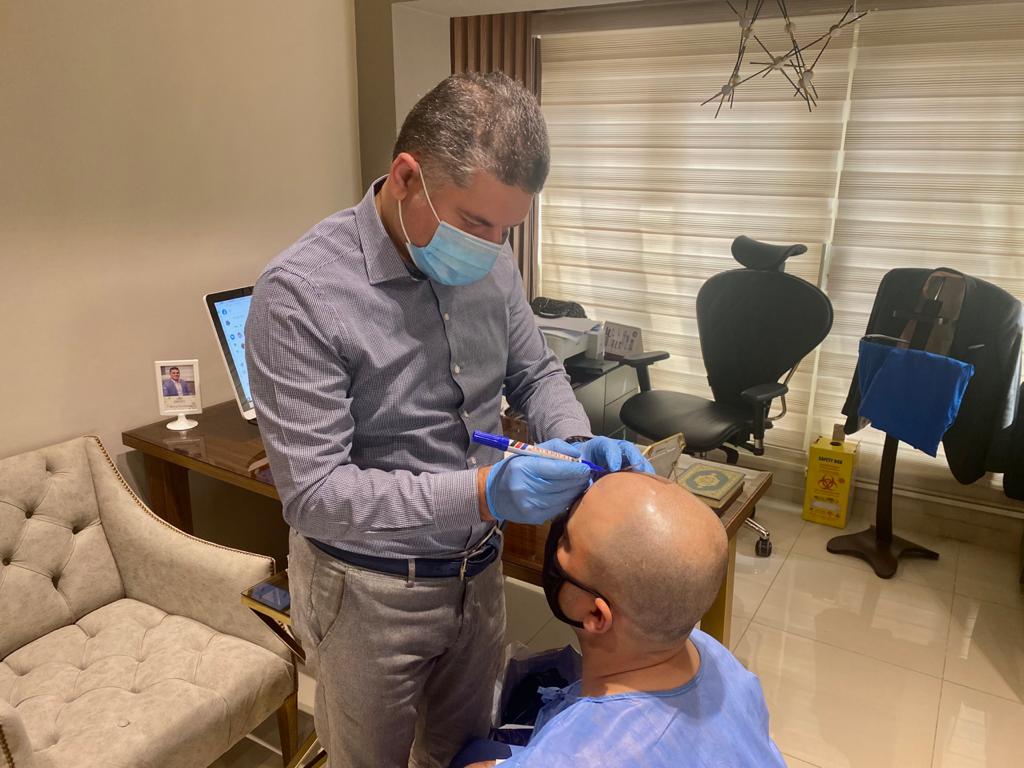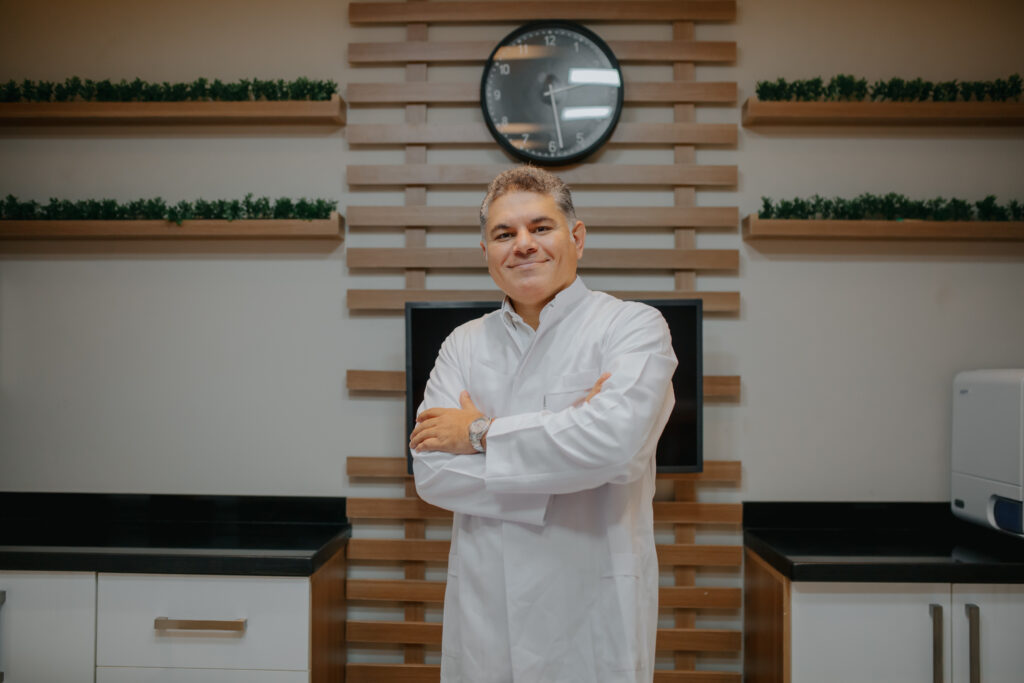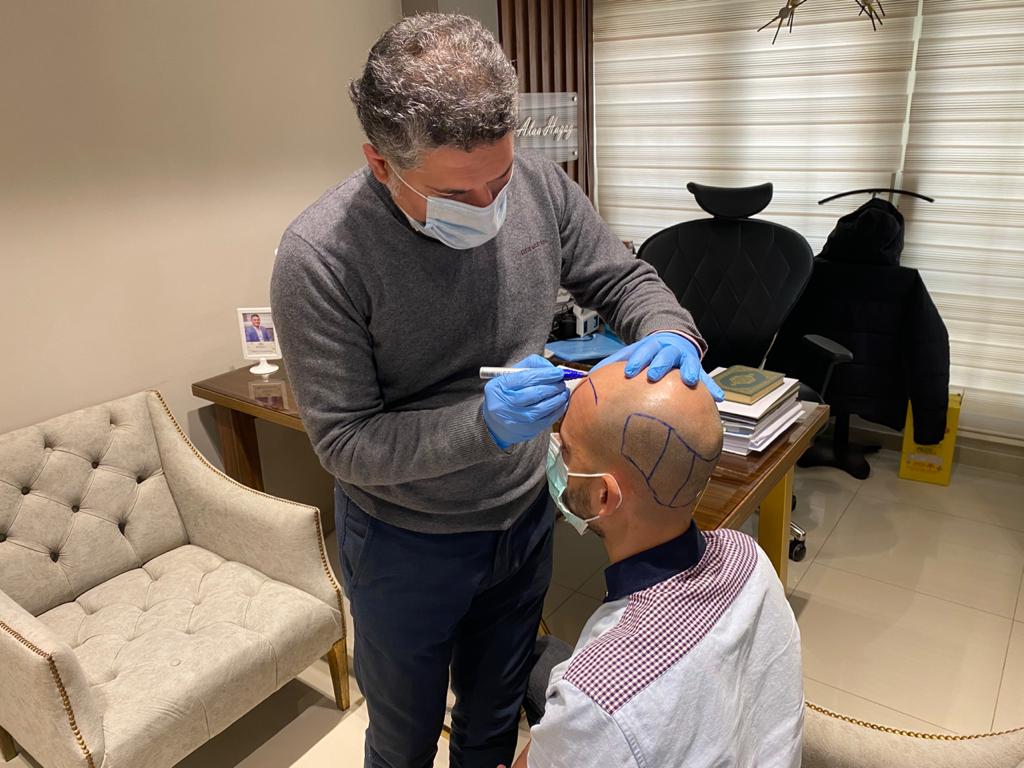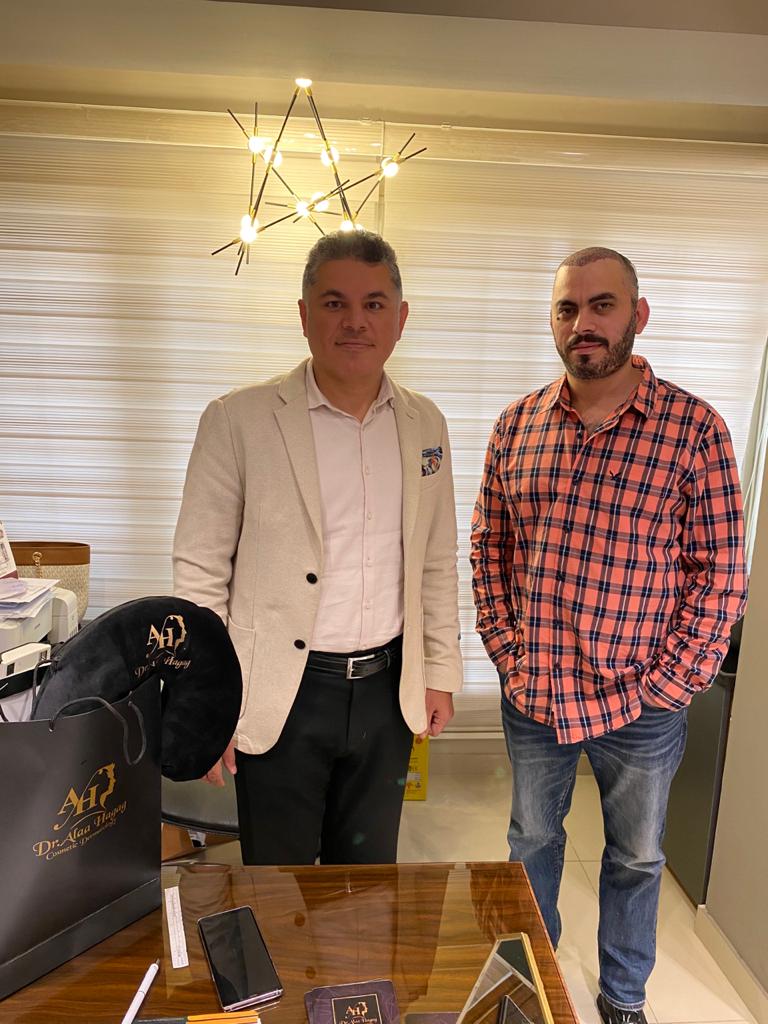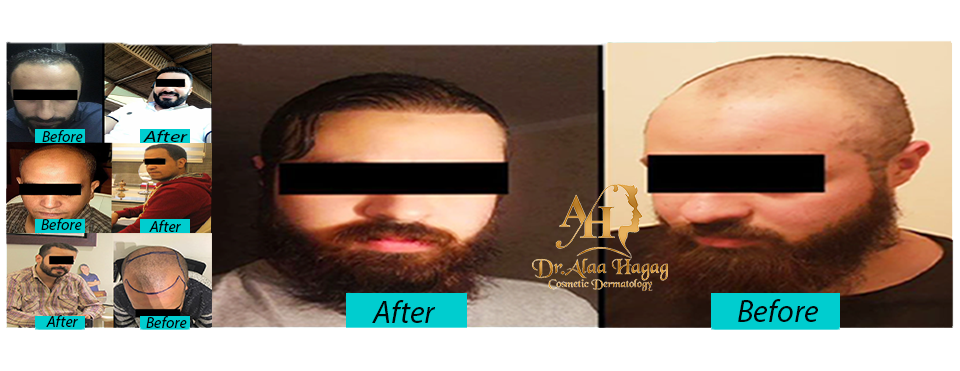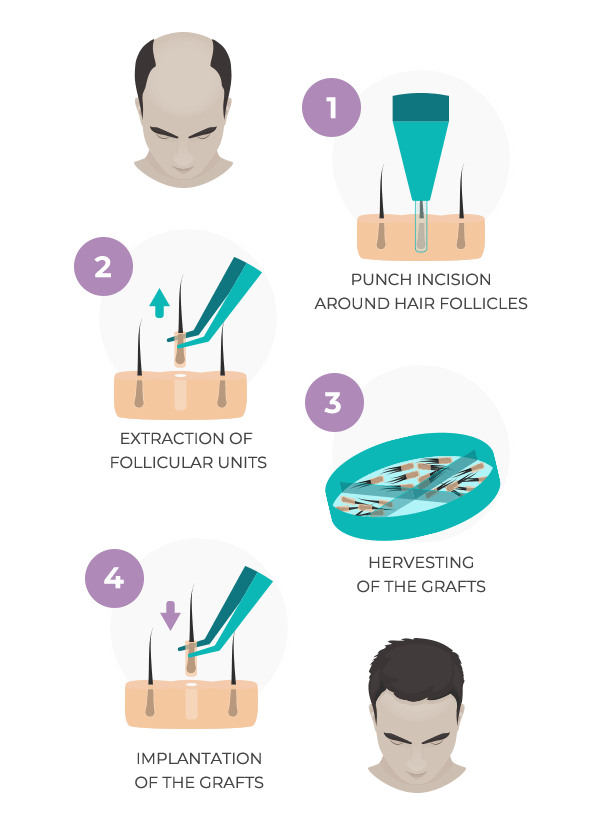The FUE technique is performed under the influence of a local anesthetic, and it is a painless method that begins with shaving the hair and cleaning the scalp well, drawing the front line of the hair, and then the process begins according to the following stages:
1. Extracting the follicles
In the extraction technique, local anesthesia is used for the donor area, after which the doctor begins to extract the follicles.
This stage extends about three hours, in which the hair roots are extracted individually from the donor area, where the doctor takes from every 1 mm of the 4 follicles to avoid dilution or Empty patches of hair, using a micromotor with fine tips and extremely small cylindrical holes, with a maximum diameter of 0.6 to 0.95 mm, according to the thickness and type of roots.
The roots are chosen very carefully and carefully, then they are given to the specialized nurse to be examined and classified according to their categories.
Then these roots are collected to be placed in a nutrient solution, which is hypotermosol, at a temperature of 4 ° C, in order to slow down the metabolism process, and also to keep the roots alive.
2. Opening channels
It is the very important stage in the hair transplant process, because the successful results and the required natural appearance depends on this step, and here comes the experience of the attending physician and the person in charge of the operation.
This stage takes between one and a half to two hours, during which local anesthesia is applied to the area to be transplanted in, and after local anesthesia for the area to be transplanted.
3. Donor area
This technique has proven successful in all operations performed, and has shown impressive results that make the hair and appearance look natural.
and it is not possible for anyone to notice that the patient has performed a hair transplant.
This opens the holes to place the follicles in them by means of the OSL slits one by one.
Holes in FUE hair transplantation are prepared according to the depth and thickness of the roots extracted by special tools, opening these holes is the most important point in the hair transplantation process, which requires the skilled doctor to accurately determine the appropriate angles and directions, so that the hair grows and takes its natural shape.
4. Hair follicle insertion
After the root canals are opened, the process of inserting them into the scalp begins in the bald areas and areas of low hair density.
The introduction is done manually, carefully and precisely, according to the direction of the canal opening, and this stage lasts from two to four hours, depending on the area of baldness.
After the end of the operation, the patient is given painkiller and anti-infection with instructions that he must follow after the hair transplantation using the FUE hair transplantation technique, which are instructions that differ greatly from those that were previously in the slide technique, in terms of the duration and the procedures themselves.
What did the FUE hair transplantation technique provide?
A new technique is usually judged by the facilities it has provided, and its observance of safety and security standards, in addition to the final results that the patient can obtain, and FUE hair transplantation is characterized by many of these features, including:
- The absence of any deep wounds or clear scars, as this technique relies on harvesting the follicles one by one, which makes the wounds very small, and only a short time is required for them to heal.
- The patient can quickly go about his normal life with ease from the next day after the operation, so he does not need to stay in the center under special care.
- FUE hair transplantation greatly preserves the density of the hair in the donor area and its aesthetic appearance. During it, only the follicles necessary for transplantation are harvested.
- FUE hair transplantation does not leave any marks or scars indicating surgery, which helps the person to integrate into his social environment with ease.
- The results obtained by the patient are very accurate and natural, so that it is not possible to distinguish between the original hair on the patient’s scalp and the hair that was transplanted during surgery.

